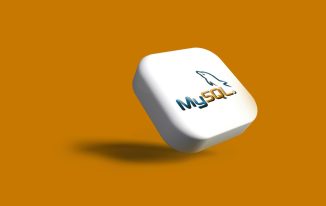Transitioning from MySQL 5.6 or 5.7 to MySQL 8.0 brings a range of new features, but can also result in performance anomalies. It is important to understand the changes and enhancements to ensure a smooth upgrade process.
Before diving into the upgrade, it’s important to prepare adequately by reviewing the existing setup. Double-check your current version for compatibility issues and consult the MySQL documentation for any specific requirements. Using professional MariaDB and MySQL support services by Shattered Silicon or one of this kind of trustable service providers can help navigate this complex process.
Executing the upgrade requires careful planning. It involves not just installing the new version but also ensuring that your databases are optimized and secured post-upgrade. This attention to detail can help avoid common pitfalls and unlock the full potential of MySQL 8.0.
Key Takeaways
- Review your current setup before upgrading.
- Understand the new MySQL 8.0 features.
- Ensure databases are optimized post-upgrade.
Preparing for the Upgrade
Before upgrading from MySQL 5.6 or 5.7 to MySQL 8.0, it’s important to ensure that your systems are compatible, fulfill all prerequisites, and choose an effective upgrade path. This helps in minimizing risks and avoiding unnecessary downtime.
Assessing Compatibility
Before initiating the upgrade, compatibility between the current and new versions should be assessed. MySQL 8.0 may not support all configurations from older versions due to changes in features and functions. It’s important to examine compatibility issues such as reserved keywords, changes in sql_mode, and support for character sets like utf8mb3 and utf8mb4. Tools like MySQL documentation offer detailed guidance. Running the mysqlcheck utility is recommended to identify and fix table errors or misconfigurations before the upgrade.
Upgrade Prerequisites
Backup is essential to preparing your system. Create a thorough backup of all databases to prevent data loss. For those opting for an in-place upgrade, check the existing configuration file for deprecated options. Running mysql_upgrade after the upgrade will ensure system tables are updated. Ensuring your system meets the necessary requirements as outlined in the MySQL documentation is important. Updating to MySQL 5.7 first can help bridge the gap if you’re currently using MySQL 5.6.
Planning the Upgrade Path
While planning, determine whether an in-place upgrade or a more comprehensive approach is needed. For sensitive systems, setting up a replication slave running MySQL 8.0 can help verify stability before full migration. Evaluate the read/write operations in scenarios like master-slave replication. Refer to the detailed guides to decide between upgrading directly from 5.7 to 8.0 or using an intermediary step. Monitoring should be continuous to solve issues that arise during and after the upgrade.
Executing the Upgrade and Aftercare
Upgrading to MySQL 8.0 involves running the upgrade process efficiently and managing new features. It’s important to focus on the upgrade steps, address compatibility, and take advantage of enhancements in MySQL 8.0.
Running the Upgrade Process
Before starting the upgrade, backing up your data is critical. A full backup ensures you can restore your system if needed. Use tools like mysqldump or Percona XtraBackup.
Use mysqlcheck to check tables and fix any issues. Ensure that all triggers, partitions, and roles are compatible. Understand that changes to system tables could impact existing configurations. Review the MySQL documentation for detailed steps and guidelines.
Run the mysql_upgrade utility after the upgrade to update system tables. Verify that the data dictionary is correctly initialized.
Post-Upgrade Considerations
After upgrading, checking the status of the database is essential. Focus on the default authentication plugin, caching_sha2_password, to secure the system.
Review any compatibility issues by referring to a system and MySQL system database tables. Consider using resource groups to manage server workload effectively.
Verify JSON enhancements and ensure common table expressions are functioning correctly. Adjust character_set_server settings for the default character set. Be sure to test the performance of all queries and indexes.
New Features and Improvements
MySQL 8.0 introduces several improvements, including enhanced query performance and InnoDB enhancements. The inclusion of invisible indexes allows for testing without affecting the database.
Security improvements offer better protection, with roles providing fine-grained access control. Window functions and common table expressions add flexibility to data queries.
Conclusion
Upgrading to MySQL 8.0 offers benefits such as improved performance and security features. The upgrade process involves careful planning, including a comprehensive backup of existing data. It’s important to check for any deprecated configurations.
Using a strategy like creating a replication slave can help ensure a smoother transition. This approach minimizes risks and allows testing before fully switching over.
Finally, being prepared for downtime and seeking professional support can avoid potential pitfalls during the upgrade process.




